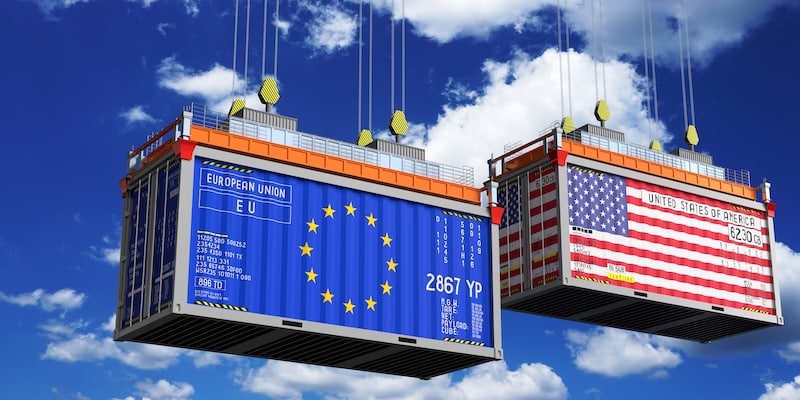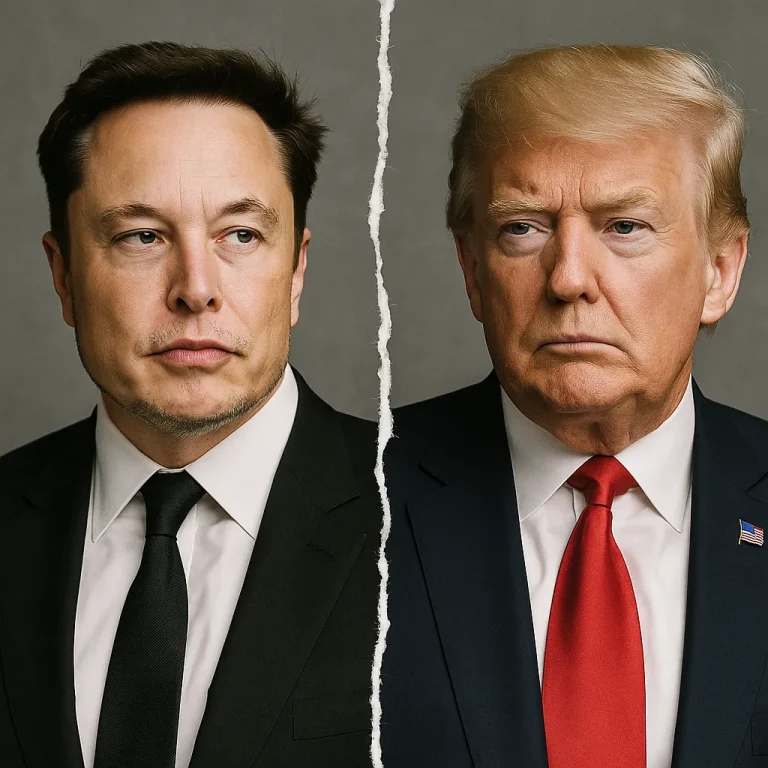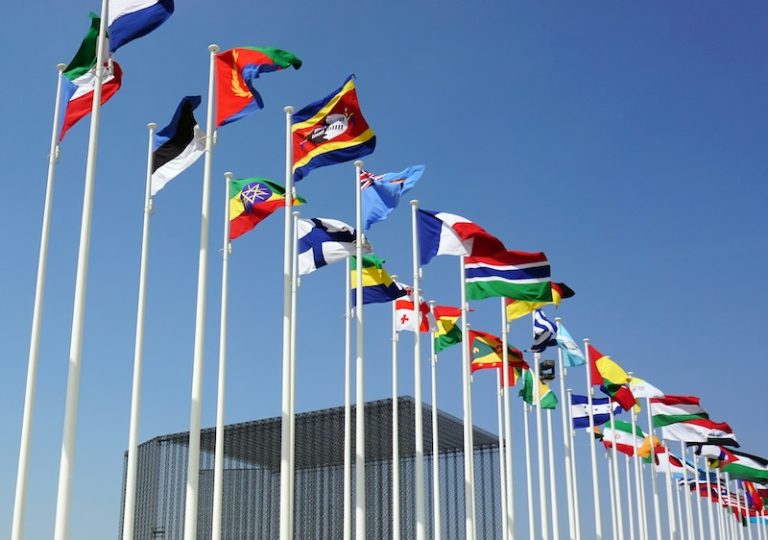
Photo: Adobe Stock
EU-US Trade Conflict By PeanutsChoice for CitizenOfEurope.com
Tariffs, retaliation, and reelection politics—why the EU–US trade war is back, and this time, Europe’s ready to fight.
⸻
Steel, Tariffs, and Strategy: The EU–US Trade War Reignites
For anyone still clinging to the illusion of a stable transatlantic alliance, this week’s developments may feel like a cold slap with a steel beam—quite literally. On June 4th, President Trump reignited an old feud by doubling tariffs on European steel and aluminum imports to 50%, triggering a sharp response from Brussels and setting the stage for another economic showdown between the world’s largest trading partners. (1 Reuters)
With campaign season in full swing and Trump trailing in some key domestic polls, Europe appears to have become a convenient punching bag once again. But unlike in 2018, the European Union isn’t coming to the table empty-handed—or empty-palmed.
⸻
Brussels Strikes Back
Within hours of Trump’s announcement, EU Trade Commissioner Maroš Šefčovič held a press conference confirming the bloc’s intention to respond with a retaliatory package worth up to €95 billion, targeting American goods ranging from agricultural products and tech components to whiskey and consumer electronics. (2. European Commission )
“The EU will not be coerced into accepting economic blackmail,” Šefčovič said bluntly in Paris, where emergency trade talks began earlier today. “If the United States wants to escalate, we will defend ourselves proportionately and lawfully.”
The retaliatory tariffs are expected to be formally adopted by the end of the month unless the U.S. walks back its latest measures—an outcome that currently seems unlikely.
⸻
A Familiar Playbook
Observers note the similarities between today’s tariff escalation and the original Trump-era trade war of 2018, which cost both sides billions and sent ripple effects through the global economy. But there are differences this time: Europe is far less naïve, and Trump is even more aggressive.
According to Politico Europe (3), French President Emmanuel Macron called the tariffs an act of “economic aggression,” while German Economy Minister Robert Habeck warned of long-term supply chain instability if the U.S. continues treating allies as adversaries.
The diplomatic tone is gone. Europe isn’t pleading; it’s preparing.
⸻
The UK Exception: A Side Deal in the Works?
Amid the fallout, one notable outlier emerged: the United Kingdom was granted a temporary exemption from the new tariffs. Sources close to the Financial Times (4) suggest this was the result of a direct intervention by UK Prime Minister Sir Kier Starmer, who reportedly spoke with Trump by phone to negotiate the carveout.
Critics argue that the UK is playing a dangerous game by cozying up to Trumpworld for short-term economic relief. “They may have dodged this bullet,” one EU official told Citizen of Europe, “but they’re now stuck dancing at the edge of the volcano.”
⸻
What’s the Strategy?
The rationale behind Trump’s decision is wrapped in nationalist rhetoric about protecting American jobs, but experts are skeptical of its effectiveness. The OECD, in its June 2025 economic outlook, (5) warned that increased protectionism could cut global trade growth by 0.5 percentage points this year—enough to tip fragile economies into recession.
Moreover, American manufacturers reliant on European raw materials could soon feel the sting of rising costs. Add retaliatory EU tariffs on American goods, and U.S. exporters—particularly in agriculture and tech—could find themselves shut out of crucial markets.
“The irony is that the tariffs might end up hurting the very people they’re supposed to help,” said one analyst from the European Centre for International Political Economy. (6)
⸻
Political Theater or Economic Policy?
Let’s be honest—this isn’t about trade. This is about Trump’s reelection campaign.
Protectionist policy is a familiar rallying cry for the MAGA base, and the EU is an easy target. In Trump’s world, multilateralism is weakness, and economic diplomacy is for losers. The playbook is working domestically, at least in the short term: social media is buzzing with “America First” slogans, and Trump is framing the EU as an overreaching bureaucracy that “steals American industry.”
But within the U.S. political establishment, there’s growing unease. Democrats and some moderate Republicans have criticized the tariffs as reckless and legally dubious. Indeed, a recent ruling by the U.S. Court of International Trade found that the executive branch had overstepped its authority in implementing tariffs without sufficient Congressional oversight—a ruling now under appeal.
⸻
Will This Lead to a Full-Blown Trade War?
Short answer: it might. If the EU responds with full force and the U.S. counters again, we’re looking at a 2025 version of the 2018 trade war—but possibly worse. Why? Because this time the stakes are higher. The global economy is weaker, inflation is still a threat, and political fragmentation on both continents makes coordinated responses harder.
According to the World Trade Organization (7), the U.S. may face formal dispute settlement cases in the coming weeks, which could further escalate tensions if Trump rejects any WTO ruling (which he likely would).
⸻
So… Who Wins?
In the short term? No one. But in the long run, this may be a turning point.
The EU is already shifting trade alliances, doubling down on deals with India, South Korea, and Latin America—markets that offer growth without the volatility of Washington politics. Trump may believe that the U.S. can go it alone, but the rest of the world is learning how to work around him.
As one EU diplomat put it bluntly: “We can’t keep pretending this is an equal partnership if one side keeps setting fire to the bridge.”
⸻
Final Thoughts
This isn’t just another trade scuffle—it’s a signal. The era of transatlantic economic harmony is cracking under the weight of political gamesmanship, nationalist theater, and leadership vacuums.
Europe is learning to play hardball. The question is: will it be enough to stop the bulldozer coming from across the Atlantic?
⸻
Disclaimer: This is a developing story.
Details may change as new information becomes available. We will update this article accordingly as the situation evolves.
Reuters. “U.S. Doubles Tariffs on EU Steel and Aluminum, Escalating Trade Tensions.” Reuters, June 4, 2025. Link
European Commission. “Remarks by Trade Commissioner Maroš Šefčovič on Proposed EU Tariff Measures.” ec.europa.eu, June 4, 2025.
Politico Europe. “Macron Slams Trump Tariffs as ‘Economic Aggression’.” Politico.eu, June 4, 2025.
Financial Times. “UK Secures Temporary Exemption from U.S. Tariffs after PM Mordaunt Call.” FT.com, June 4, 2025.
OECD. “Global Economic Outlook – June 2025.” oecd.org, June 2025.
European Centre for International Political Economy (ECIPE). Interview conducted with analyst at ECIPE, June 4, 2025.
World Trade Organization. “WTO Monitors US–EU Trade Dispute over Metal Tariffs.” wto.org, June 2025.
You may like:Inside Trumpworld: The Fortress Built to Kill Democracy



